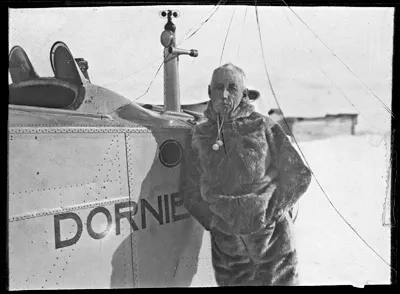
Roald Amundsen - 4
North Pole by Airplane, N24 and N25 - 1925
1 - Belgica,
Belgian Antarctic Expedition,
1897 - 1899 - 1st Mate
& Gjoa,
Northwest Passage, 1903-06
- Captain
2 - Fram,
South Pole Expedition,
1911-12 - Expedition Leader
3 - Maud,
Northeast Passage, 1918-25
- Expedition Leader
4 - N24 and
N25 Flying Boats,
North Pole
by Air, 1925
5 - Airship Norge,
North
Pole by Air, 1926
6 - The last years
and last journey to
1928
Roald Engelbregt Gravning Amundsen - 16th July 1872 - 18th June 1928
Videos of the expedition: 4 mins 3 secs | 32 min 15 sec | 1 hr 16 min 57 secs
The N24 and N25 Flights Towards the North Pole, 1925-26
In late 1924 Amundsen in a somewhat melancholy state having fallen out with his family and business partner, having declared himself bankrupt (a move that could arguably have been avoided were it not for his pride) and criticized in the press, set off for the USA again where he knew he would be received with greater sympathy. The Maud expedition was not yet over, the men aboard were hoping their wages would be paid and he needed to raise funds for new projects, so a lecture tour was planned.
While in New York, a man named Lincoln Ellsworth introduced himself, he was an amateur explorer, a long time admirer of Amundsen and the son of millionaire. They agreed to join forces and a plan was made to fly to the North Pole from Spitsbergen (Svalbard) planning to leave in May 1925 using two of the Dornier-Wal flying boats from Italy he had intended to use earlier in the year. The expedition was largely financed by Ellsworth's father and other prominent figures from New York were brought in as "advisors", any new lands that may be found were described as being of use for "air stations and bases". Amundsen courted the press and embarked on a lecture tour to promote his adventure.

 Assembly
of the Dornier-Wal flying boats N24 and N25
Assembly
of the Dornier-Wal flying boats N24 and N25
In early 1925, Amundsen and Ellsworth arrived in Norway to prepare for the expedition, a time which also led to many invitations to attend numerous celebrations and feasts. By early May the expeditionary party of six men including pilots and mechanics had arrived at the small mining settlement of Kings Bay on Spitsbergen where they assembled their two aircraft brought from Italy by rail and ship.
Amundsen laid out his plan to the others which involved flying both aircraft to as close to the North Pole as possible and then landing to take readings to verify their position. He then proposed to take one of the aircraft on to Alaska while the other returned to Spitsbergen, a plan which was voted down by all of the others on the team. One of the pilots, Riiser-Larsen mentioned that while in Italy he had heard of an airship designed by Umberto Nobile that was available second hand for $100,000. Amundsen and Ellsworth had discussed airships in their planning for this expedition and decided against it because of their expense, this was a relatively low price and so Ellsworth decided to purchase it and make a tour of the Arctic region the following year while this years trip would consist of a return trip to the pole.
Dornier-Wal flying
boats N24 and N25 at Kings Bay (Ny-Alesund)
preparing for
take-off on May the 21st 1925
The bay was still covered in ice which made take-off for the flying boats much easier than on water as the ice provided much less friction and drag allowing an extra ton of fuel to be loaded onto each. The men waited for the weather to calm and become suitable for flying which it did on the 21st of May, the miners of King's Bay were given the day off to watch. The aircraft were crude with open unheated cockpits, the return trip to the pole was about 2,400km along a route that had never seen any aviation activity, each had three men wrapped in many layers of clothing for the exposed journey in low temperatures and at high speed.
Amundsen's plane, N25 was the first to start, pilot Riiser-Larsen slowly lifted the heavily laden aircraft off the ice and circled to wait for the other N24 to join it, they then headed off in the light of the rising sun towards the North Pole.
N24
Lincoln Ellsworth
Leif Dietrichson - Pilot
Oscar Omdal - Mechanic
N25
Roald Amundsen
Hjalmar Riiser-Larsen - Pilot
Karl Feucht - Mechanic
The aircraft flew at about 120 kph and so after 8 hours had covered about 1,000 km over thick and continuous but largely featureless floating sea-ice. Amundsen thought they must be near the North Pole and started to look for a place to land. As they descended they saw that the surface far from being as smooth as it appeared from a higher altitude, was very broken up with pressure ridges of ice, open water leads and icebergs of various shapes and sizes. As they cruised at lower altitude, one of the engines of Amundsen's plane, N25 began to falter so Riis-Larsen, the pilot steered into a narrow channel of water covered with slush ice managing to avoid larger pieces before coming to a halt. Without radios the other plane, N24 didn't know what had happened and continued for another 10 minutes before landing in what seemed a safe open water lead in the ice. It proved not to be long enough however and soon the aircraft bounced along the ice surface at the end of the water channel and crashed to a halt, one engine was badly damaged and the hull started to take on water. The lack of engine noise from N25 indicated that Amundsen had landed also and not flown on without them. They set up their tent and started to make hot drinks to warm themselves up.


N24 on the first day after crashing,
with the tent to the left in the top picture, Ellsworth in the
bottom
The next day, Dietrichson, Ellsworth and Omdal with N24 climbed an ice hummock from where they saw N25 about 5km in the distance through binoculars, the two groups waved flags at each other but couldn't communicate further. A day later they started off to reach Amundsen's group, the going was very difficult if the distance not great, they carried very heavy 50kg packs through deep snow and with ice broken with pressure ridges that pushed it up several metres in places. At one point while crossing the thin ice of a recently frozen over channel, all three men fell through to the sea, Omdal was almost dragged under the ice edge by a current but was saved by Ellsworth who cut his pack from him which then disappeared beneath the ice just before Omdal was dragged out to safety. The three were soon reached by Amundsen and Riiser-Larsen who had set out to meet them and helped them back to their camp besides N25 where they changed into dry clothes and were given hot drinks.

Ellsworth and Amundsen taking navigation
readings
Isolated 600 miles out on the ice with one aircraft unusable and the other undamaged but perched on an ice hummock and with just three weeks worth of food, Amundsen organised the group to prepare the aircraft for take off and the ice surface into a flat, smooth surface to act as a runway. The ice they were living on was unstable and the aircraft was vulnerable to being frozen in and then silently crushed while the ice imperceptibly moved, watching for this and rocking the aircraft to prevent it was added to their daily duties. They began to run out of food and went onto half rations, the reduced energy available making them weaker and slower at their work.

Scavenging materials from the N24
in preparation to the flight back home
On the 15th of June, 25 days after they had landed they were ready to escape, they had eaten all of the food and the runway had reached a thick ice ridge meaning it could not be extended any further, though fog lay on the runway and around the aircraft, this was the time for their only chance. Six men was a heavy load and everything unnecessary was dumped on the ice to reduce weight until they had the clothes they stood up in and little else. Four of the six crawled into the back of the aircraft with Amundsen next to Riiser-Larsen piloting, it bumped and lurched across the ice surface with the engines screeching as full throttle was applied, just before the ice ridge at the end of the runway, the flying boat climbed up and over, just managing to clear it.
The flight took place in dense fog with the aircraft flying above and then below it, sometimes skimming above the ice to gain a view ahead. After eight and a half hours and with only half an hour of fuel remaining, the mountains of Spitsbergen appeared in the distance, the last pack of chocolate bars that Amundsen had kept back were opened in celebration. As they got closer a small steering problem that had been present the whole flight got much worse meaning the aircraft had to be landed urgently, it was put down in a small lead of open water in Hinlopen Strait avoiding the ice. Floating on the sea, N25 then taxied to the shore reaching a small icy bay on the far side of the island from Kings Bay from where they had left.
The sail of a sealing boat appeared on the horizon, the men jumped and shouted and waved but went unseen. They got back into the plane and Riiser-Larsen started off across the sea after the boat which stopped and took them in tow, "You're all supposed to be dead".
They were taken to Kings Bay just in time to see two rescue ships preparing to depart to look for them, here they received a heroes welcome as might be expected from men seen as being "back from the dead". Their story was cabled around the world to newspapers that had paid for exclusive access within their countries, once again Amundsen was a Norwegian hero and for the first and only time, his adventure had begun and ended in Norway. A grand reception was given some days later in Oslo with crowds in the streets, thousands of small boats in the harbour and a salute from a fleet of Royal Navy ships while the repaired N25 circled overhead.
Next page - across the North Pole by flying airship
Historical pictures from Nasjonalbiblioteket / National Library of Norway, link
Roald Amundsen Books and Video

The South Pole:
Roald Amundsen, the Norwegian Antarctic Expedition, 1910-1912
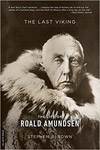
The Last Viking:
The Life of Roald Amundsen
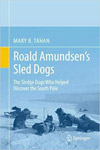
Roald Amundsen's Sled Dogs:
The Sledge Dogs Who Helped Discover the South Pole
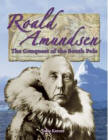
Roald Amundsen
The Quest for the South Pole, ages 9-12

The Amundsen Photographs
discovered in 1986, pictures from three of Amundsen's voyages
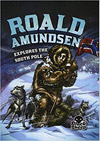
Roald Amundsen Explores the South Pole
ages 7-10










